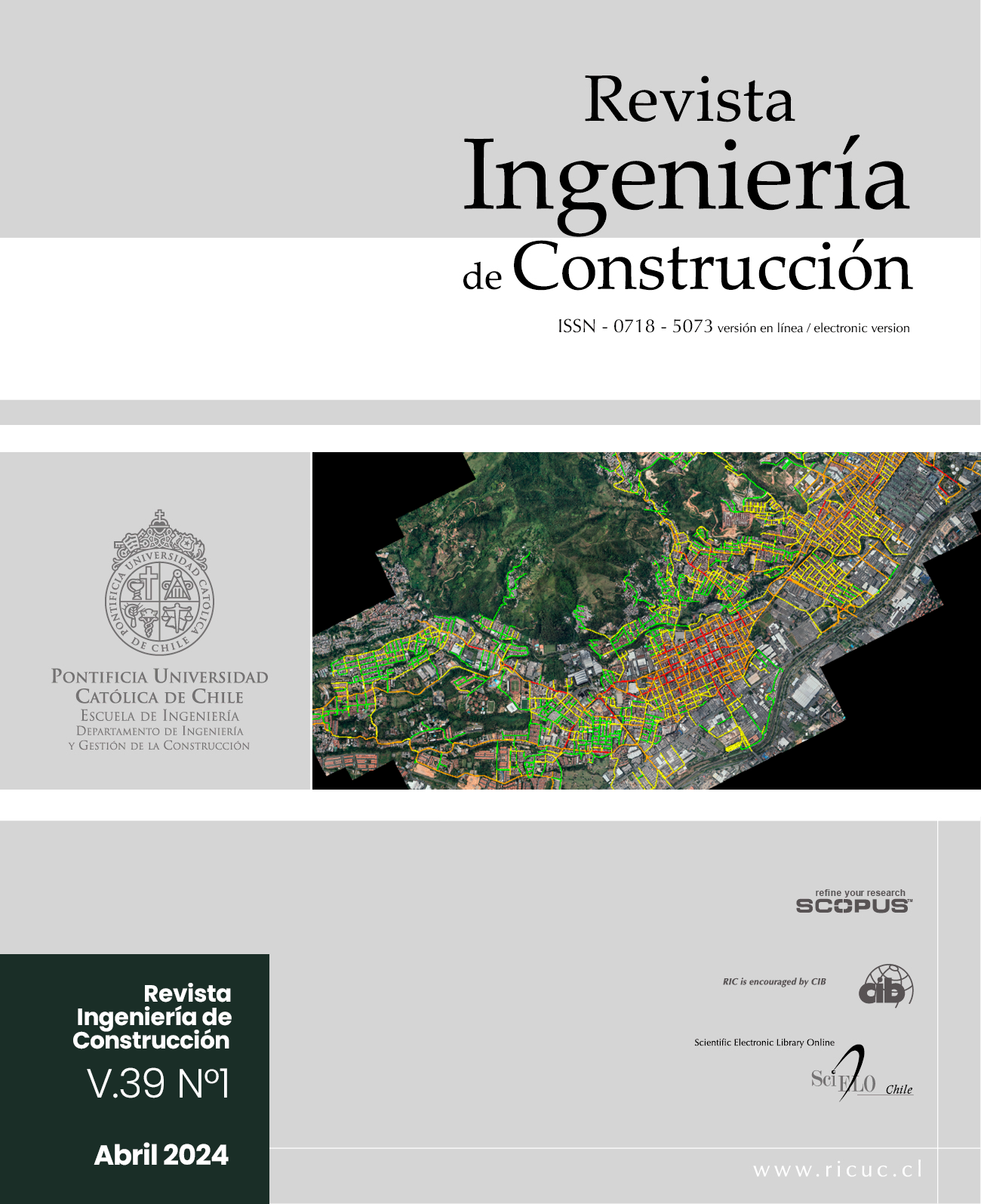Incidence of cumulative degree-days on asphalt mixture aging in regions of Ecuador
DOI:
https://doi.org/10.7764/RIC.00096.21Keywords:
asphalt mixtures, aging, durability, cumulative degree-days, stiffness modulusAbstract
The aging of asphalt mixes affects the durability of the pavement. The characteristics of the mixture interact in a complex way with the temperature and service time on site, so the use of the cumulated degree-days (CDD) criterion is possible. The work’s objective is to analyze the aging of the mixtures in the Coastal and Andean regions, through the application of the CDD related to the stiffness modulus at 20 °C in the NAT equipment, obtained from cores sampling in roads built in different years and to make observations regarding existing damages associated with durability. Seven sections were selected from similar mixtures placed between 0 and 14 years ago, made with crushed alluvial materials and AC-20 asphalt from the Esmeraldas refinery. The results show that the aging evaluated through the stiffness modulus presented a greater impact in the Coastal region than in the Andean region due to its higher temperatures, allowing the use of the CDD to unify the behaviors in the two regions into a single relationship. Observations show that the probable range of the progressive evolution of damages, from its beginning to its critical phase, is from 45.000 to 80.000 °C-days.
Downloads
Downloads
Published
How to Cite
Issue
Section
License

This work is licensed under a Creative Commons Attribution-NonCommercial-NoDerivatives 4.0 International License.

